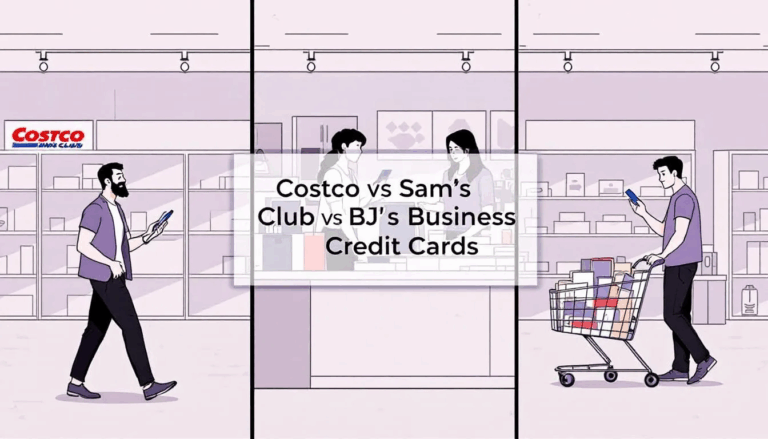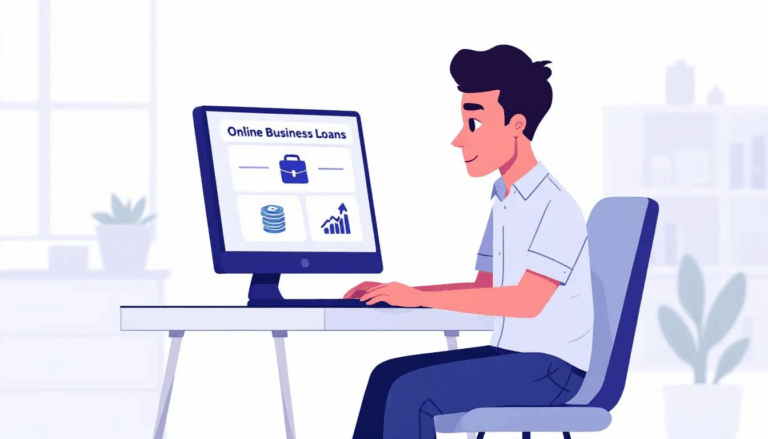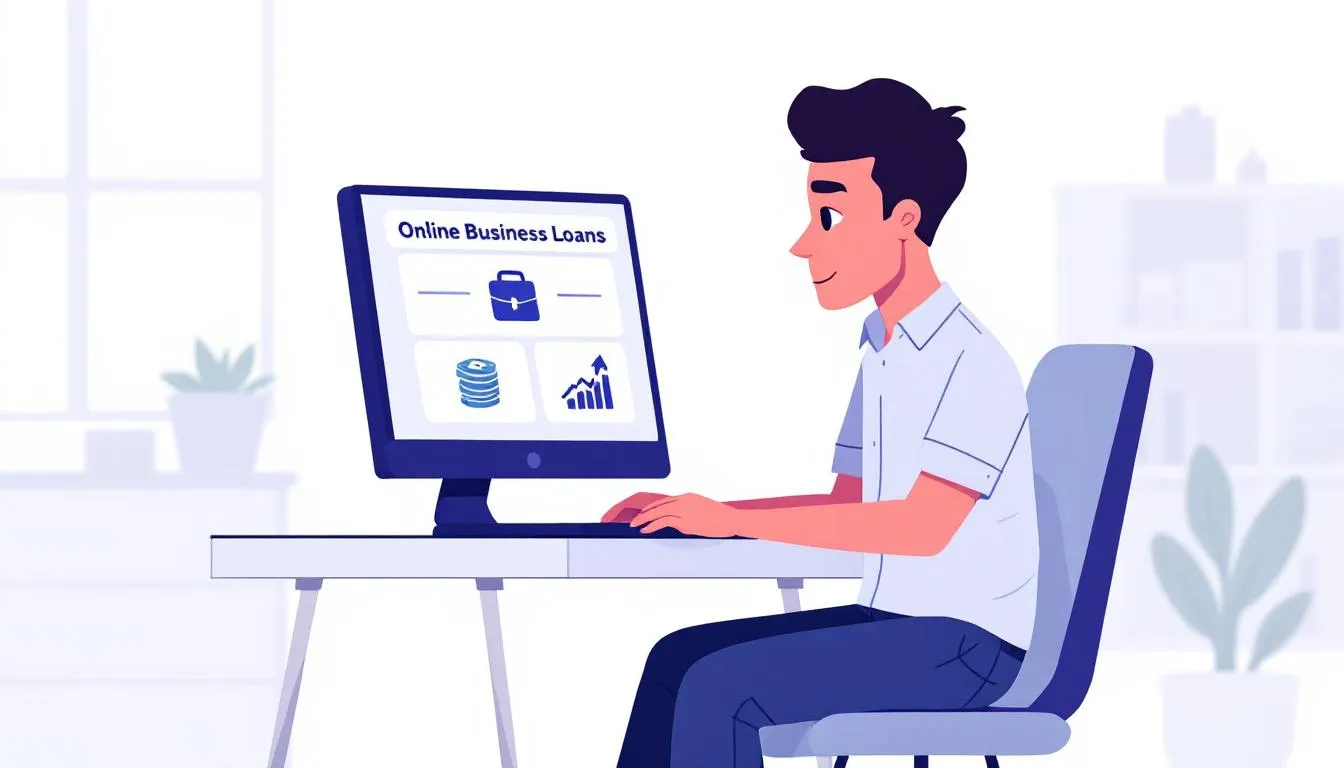What is a Business Line of Credit?
A business line of credit works similarly to a business credit card, offering a set credit limit from which you can withdraw funds as needed to meet business expenses. You only pay interest on the amounts borrowed, with a minimum payment required if there’s an outstanding balance. By paying down the balance, funds become available again due to the revolving nature of the credit line.
The main difference between a line of credit and traditional loans or credit cards is how borrowed funds are accessed and repaid: a line of credit offers more flexibility, allowing you to draw and repay funds as needed, while loans provide a lump sum with fixed repayments, and credit cards may have higher interest rates and different usage restrictions.
Having a business line of credit can be crucial to the success of small businesses. It provides easy access to cash without requiring reapplication for each use, unlike traditional small business loans.
Online lenders simplify the application process, often waiving the requirement for financial statements or tax returns. Although this may result in smaller credit limits, it’s a valuable option for short-term financing that requires minimal paperwork.
How Do Business Lines of Credit Work?
Business lines of credit through United Capital Source’s network of lenders offer the following features:
- Credit Limit Amounts: $1k – $1 million.
- Factor Rates: Starting at 1% p/mo.
- Terms: Up to 36 months.
- Speed: 1 -3 business days.
After drawing funds from a small business line of credit, you’re responsible for interest payments and a minimum payment, similar to using business credit cards. Payment schedules vary by lender, with payments typically due on a weekly or monthly basis. Each payment normally covers both interest and a portion of the principal, thereby reducing your outstanding balance over time. When you make timely repayments, your available credit is restored. For instance, if your monthly payment is $200 with $10 in interest, paying $200 would add $190 back to your credit line.
Draw fees, typically ranging from 1.6% to 2.5%, may apply per withdrawal. Credit limits generally range from $1,000 to $1,000,000, with interest rates starting at 8% and terms ranging from 1 to 18 months. Lines of credit come with variable interest rates, meaning your rate can change over the life of your loan.
An unsecured business line of credit typically has lower credit limits and higher rates. They don’t require collateral but may require a personal guarantee. A secured line of credit backed by collateral, such as real estate, may be more suitable for higher credit limits.
How Do I Withdraw Cash from a Business Line of Credit?
Withdrawing cash from a business line of credit (LOC) is typically a straightforward process; however, it’s essential to understand each step to avoid unexpected fees or misunderstandings regarding repayment terms. You will need to link a business bank account to deposit the funds from your line of credit draw. Some lenders may also require you to complete a withdrawal form or provide additional documentation before releasing funds.
Here’s a step-by-step guide:
Log in to Your Lender’s Online Platform
Most lenders offer online platforms where you can manage your business line of credit. Once logged in, you can review your available balance, interest rate, repayment terms, and any applicable draw fees.
Choose the Withdrawal Amount
Determine the amount of cash you need to withdraw, taking into account your immediate business needs. Upon drawing from your line of credit, a separate loan is issued to your business for that specific amount. The loan terms will vary depending on the specific agreement you have in place.
Withdraw only what is necessary to avoid high interest costs and fees, as you’ll only pay interest on the borrowed amount. Please note that the repayment period for the withdrawn amount may vary depending on your specific agreement. Lines of credit tend to treat cash withdrawals as cash advances.
Select the Transfer Method
Typically, customers can choose their preferred transfer method when withdrawing funds, with most lenders allowing transfers directly to their business bank account. Some lenders may also provide checks or similar instruments that will enable you to draw from the credit line without transferring funds electronically. Be sure to check for any differences in fees or processing times based on your chosen method.
Linking a New Destination for Funds
When you’re ready to withdraw money from your line of credit, it’s essential to have a business checking account linked as the destination for your funds. Setting this up is usually straightforward: you’ll provide your account information to your lender, who will then verify that the account is eligible to receive funds. Double-check that all account details are accurate to prevent any delays or issues with your transaction.
Review the Draw Fees and Repayment Terms
Most business LOCs come with draw fees, which may vary by lender. This fee is usually a small percentage of the amount you withdraw (often around 1-2.5%). Before finalizing the withdrawal, review the repayment terms, including the due date for the first payment and the interest rate that will be applied to the withdrawn amount. Loan fees are calculated based on your business’s overall financial profile and history with American Express.
Draw fees and repayment terms may be subject to change based on lender policies or your account status.
Initiate the Withdrawal
After confirming the details, initiate the transfer. The funds should arrive in your business bank account within a specified timeframe, which can be anywhere from a few hours to a few business days, depending on the lender.
Use the Funds
At this point, you can use the funds for various purposes, such as making business purchases, covering payroll, or investing in your business. Ensure you use a business line of credit draw exclusively for business purposes, not for personal expenses.
Set Up a Repayment Schedule
After you use money from your line of credit, you’ll need to pay it back along with any accrued interest. Many lenders offer the option of automatic minimum payments, which can help ensure timely payments and preserve your credit rating. When possible, repay the total amount to save on interest costs.
You can establish an autopay account, which will automatically deduct monthly payments according to the terms of your loan agreement. Keep in mind that paying down the balance sooner can help reduce interest costs. Additionally, repaying your balance early may reduce your total interest costs and help you avoid additional fees.
Replenish Your Credit Line
After you make payments, your available credit line will increase, allowing you to withdraw more funds in the future if needed. This revolving structure makes business LOCs a versatile way to manage cash flow and cover unexpected expenses.
By following this process, you’ll gain efficient access to funds from your business line of credit while managing associated costs.
How Do I Qualify for a Business Line of Credit?
Approved businesses we work with here at UCS typically meet the following minimum requirements:
- Credit Score: 625+.
- Annual Revenue: $200k+.
- Time in Business: 6+ months.
Qualifying for a business line of credit depends on various factors, including credit history, annual revenue, business health, and other financial metrics. Your credit history and score can affect your eligibility for a line of credit and the terms you are offered, as credit approval is required before you can access these funds. Lenders will assess your business credit rating and annual revenue and may need financial documents.
A strong credit history and a minimum credit score are often prerequisites; however, some alternative lenders offer options for businesses with lower credit scores. Lenders may also examine the business’s cash flow, credit utilization, and existing debt.
How Do I Apply for a Business Line of Credit?
Eligible small businesses must be in business for at least six months and have a minimum credit score of 575. You must also prove that your company is currently earning a profit. If approved, you can get funded in 1-3 business days.
Here’s how to get started:
Step 1: Determine How Much Funding You Need
Unlike other loans, business lines of credit are often not pursued with specific investments in mind. After all, you’re supposed to apply before you need the money. For this reason, aspiring borrowers might not know exactly how much funding to request. So, think about how you’ll most likely use your funding and why you are applying in the first place. This will help us understand why you’re requesting this amount.
Step 2: Gather Your Documents
You might not need all of the following documents depending on your creditworthiness. However, it’s better to have them on hand just in case:
- Business bank account statements from the past three months
- Driver’s license
- Voided check
Step 3: Complete Application
You can begin the application process by calling us or filling out our one-page online application. Either way, you’ll be asked to enter the information from the previous section along with your desired funding amount.
Step 4: Speak to a Representative
Once you apply, a representative will contact you to explain the repayment structure, rates, and terms of your available options. This way, you won’t have to worry about surprises or hidden fees during repayment.
Step 5: Receive Approval
If and when you’re approved, funds should appear in your bank account in 1-2 business days.
What Are the Benefits of Business Lines of Credit?
A business line of credit (LOC) offers valuable flexibility for companies by allowing them to draw funds only when needed, unlike traditional loans, which require a fixed lump sum. This on-demand borrowing will enable businesses to pay interest only on the amount they withdraw, thereby minimizing interest costs when funds are not in use.
Additionally, business LOCs operate as revolving credit, meaning that once you repay a portion of the funds, the credit line replenishes. This setup provides ongoing access to funds for future financing needs, a feature that is especially helpful for companies with fluctuating cash flows. For example, a business might draw funds to cover expenses during a slow season, repay the balance as revenue picks up, and then have the credit available again when needed.
Business LOCs are also particularly effective for cash flow management, allowing companies to address day-to-day operational expenses without requiring a large, upfront loan. This adaptability supports companies facing short-term expenses, seasonal fluctuations, or unexpected costs without the pressure of carrying a substantial debt.
Another notable benefit is that many business lines of credit, especially unsecured options, do not require collateral, such as business assets. This lack of a collateral requirement makes them a more accessible financing option for smaller businesses or companies without significant assets to pledge, giving these businesses a valuable financial tool without the risk of asset forfeiture. The value of a business line of credit lies in its ability to provide flexible, accessible funding that can be tailored to a company’s unique and changing needs.
What Are the Drawbacks of Business Lines of Credit?
Despite their benefits, business lines of credit also come with potential downsides. Interest rates for LOCs are often variable, meaning they can fluctuate over time, which impacts monthly payments and overall borrowing costs. There may be additional fees, such as draw fees each time funds are borrowed or maintenance fees to keep the line open, that can add up, making LOCs more expensive than they initially seem.
Qualification requirements can be strict, as many lenders require a solid credit history and established business performance before approving a business LOC. Other lenders may offer business lines of credit for individuals with bad credit, but these typically come with higher costs and lower limits.
Another drawback is that the revolving structure of LOCs, while flexible, can also make debt management more challenging. The ease of access to credit can sometimes lead businesses to repeatedly borrow funds without a clear repayment plan, leading to a debt spiral. Without careful cash flow management, companies might find themselves in a cycle of debt that becomes increasingly difficult to break.
For unsecured lines of credit, which don’t require collateral, lenders often charge a higher interest rate as a way to balance their risk. This higher interest rate can make unsecured LOCs more expensive than secured lines, where collateral is offered to reduce the lender’s risk.
Business Line of Credit Pros & Cons
Pros:
- Borrow only as needed and pay interest only on withdrawn funds.
- Credit is replenished with each repayment, providing continuous access.
- Helpful for covering regular expenses or unexpected costs.
- Suitable for businesses lacking substantial assets, as no collateral is required.
Cons:
- Variable interest rates and additional fees can raise costs.
- Requires high annual revenue to qualify.
- It can lead to excessive borrowing if not managed carefully.
- Higher interest rates for unsecured lines due to a lack of collateral.
Frequently Asked Questions
Here are the most common questions about withdrawing cash from a business line of credit.
Is Withdrawing Cash from a Business Line of Credit Difficult?
Withdrawing cash from an LOC is generally straightforward, especially if you have access to an online lender with a digital platform. Many business LOCs offer immediate or next-day cash access after a withdrawal request. You can access your credit line by using your Visa access card, writing a check, transferring funds, or getting cash.
However, for lines from traditional banks, you may need to visit a branch or go through additional steps, especially if your line of credit is secured and involves collateral agreements. When you apply for a line of credit, you will need to provide your credit history, employment and income information, and outstanding debts.
How Long Does It Take to Withdraw Cash from a Business Line of Credit?
The time required to access funds depends on the lender. Online lenders and some credit unions typically offer faster access, often within a few hours or the next business day.
Traditional banks may take longer to process requests, sometimes requiring multiple days. Most lenders clarify withdrawal timelines in the loan agreement, so be sure to check this detail before opening an account.
Do I Have to Pay Interest for Cash I Don’t Withdraw from a Business LOC?
One of the advantages of a business line of credit is that you only pay interest on the amount you withdraw, not on the entire credit line. This structure makes LOCs more cost-effective than traditional term loans, as there’s no need to pay interest for unused funds. However, some lenders charge origination fees, monthly fees, or maintenance fees for keeping the credit line open, even if you don’t make any withdrawals.
Can I Get a Business Line of Credit with Bad Credit?
This product is available to borrowers with bad credit; however, your borrowing limit may be lower, and your interest and terms may be less favorable – i.e., you may not qualify for the prime rate for the product. However, if your cash flow is solid, poor credit may have a lesser impact on your borrowing limit, interest rates, and terms.
We’ve repeatedly mentioned that the best time to apply is before you need the money. Thus, if you’re concerned about poor credit or business credit score impacting your borrowing limit or interest, you should improve your minimum credit score before applying. There are also other small business loans designed for borrowers with bad credit.
Withdrawing Cash from a Business Line of Credit – Final Thoughts
Many small business owners find that business lines of credit’s speed and flexibility make them a highly valuable financing tool. The most challenging aspect of a business line of credit is knowing how to apply and getting approved before you need the funds.
Once approved and set up, withdrawing cash from a business line of credit is typically a straightforward process. However, the exact process depends on the lender and the type of LOC. Ensure you carefully review any loan agreement and understand the process. Don’t hesitate to ask your lender or broker for details on the process, including daily limits, minimum withdrawal amounts, transfer speeds, and fees.
Contact us if you have any additional questions about a business line of credit draw or to apply for a small business loan. Our alternative financing experts can help you find the best small business financing options to achieve your goals.













